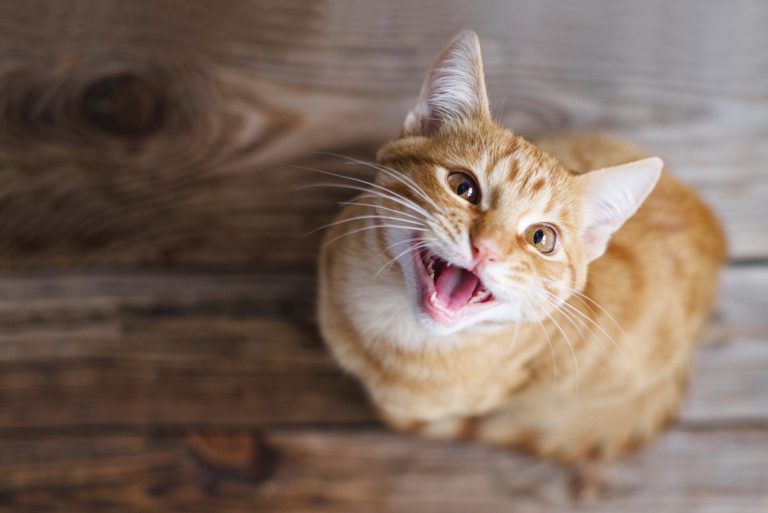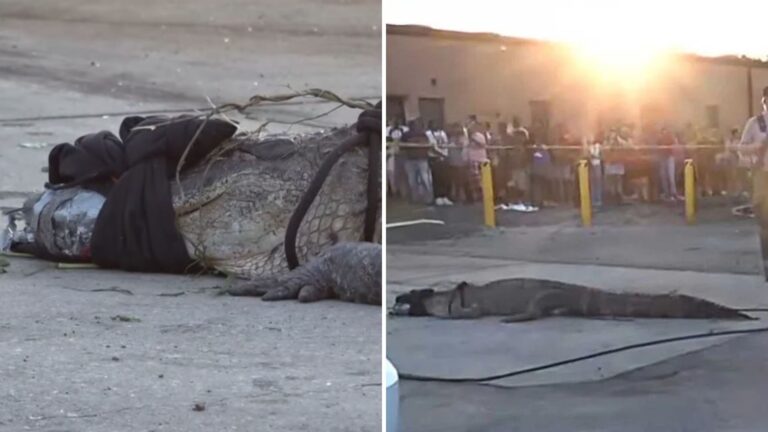The Most Beautiful Birds Flying Over Colorado
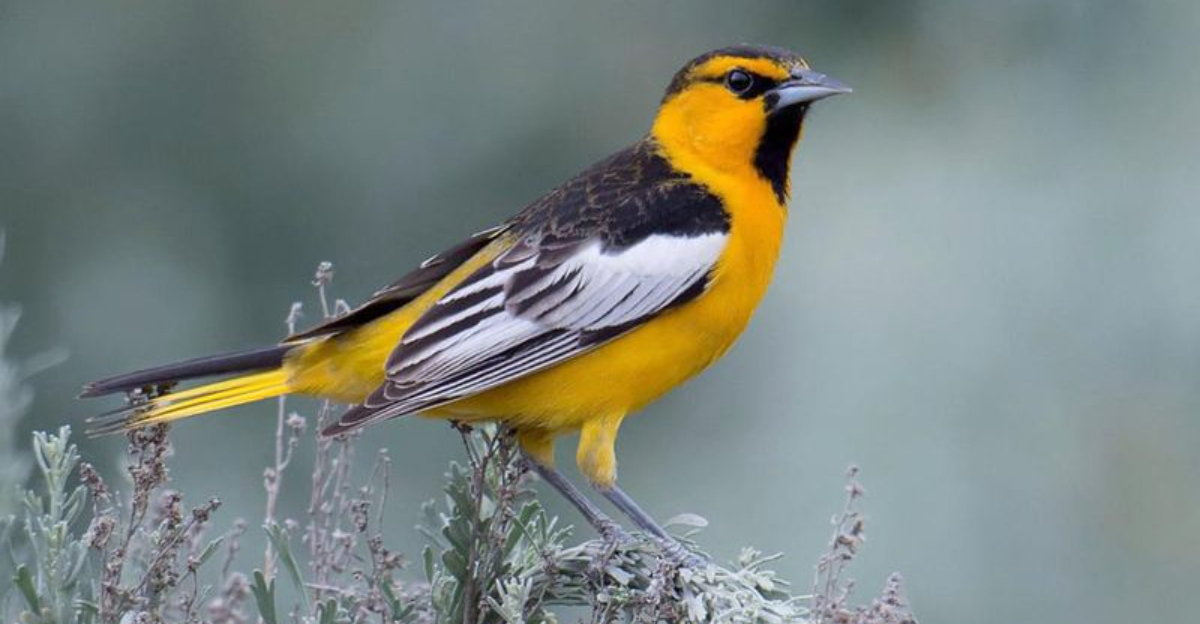
Colorado’s big blue skies are more than just a pretty backdrop—they’re highways for some of nature’s most spectacular winged travelers. From mountain peaks to prairie grasslands, the Centennial State hosts an amazing variety of colorful birds that dazzle bird watchers and casual observers alike. Grab your binoculars and look up—these feathered beauties might be soaring right above you!
Painted Bunting
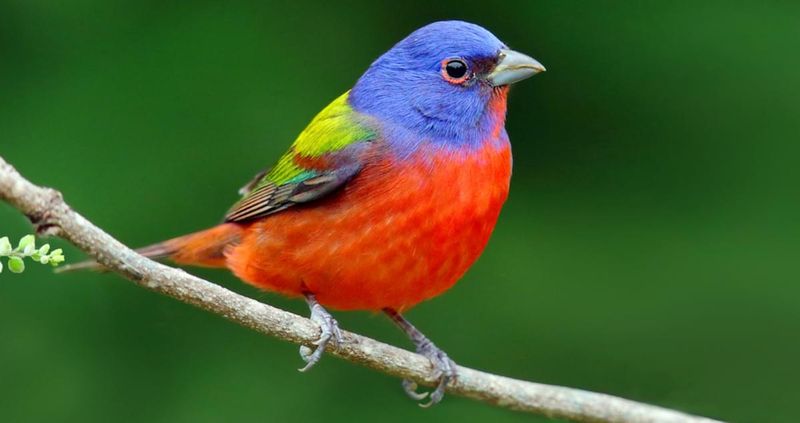
Imagine a bird that looks like it flew through a watercolor painting! Male Painted Buntings flash an impossible combination of bright blue heads, red underparts, and green backs as they zip across Colorado’s southeastern corner.
These technicolor treasures visit during summer months, bringing tropical flair to our state. Despite their flashy appearance, they’re surprisingly shy birds that prefer thick brushy areas.
Golden Eagle
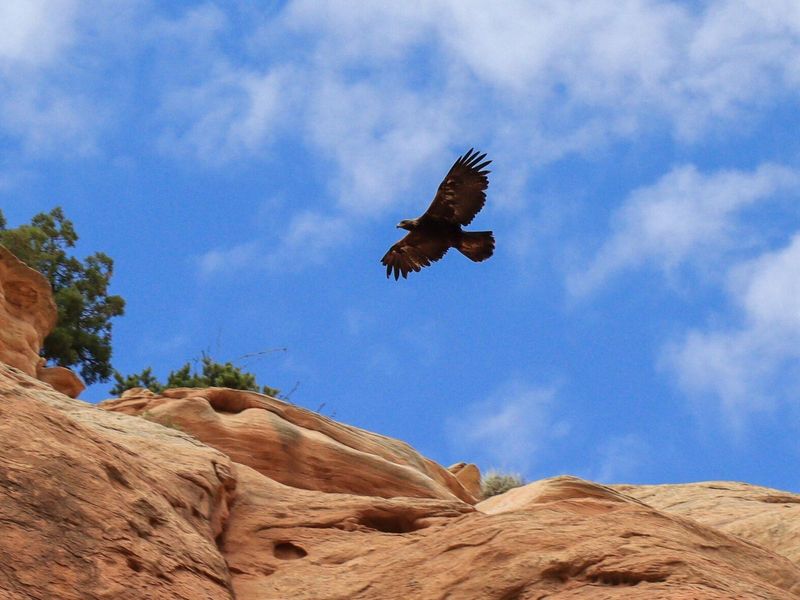
Soaring high above Colorado’s rugged peaks, these impressive raptors command attention with their massive 7-foot wingspans. Sunlight catches their namesake golden-brown neck feathers, creating a glowing halo effect against blue mountain skies.
Unlike their bald cousins, Golden Eagles prefer remote wilderness areas away from human development. Their powerful talons can exert 750 pounds of crushing pressure—enough to take down prey as large as deer!
Western Tanager
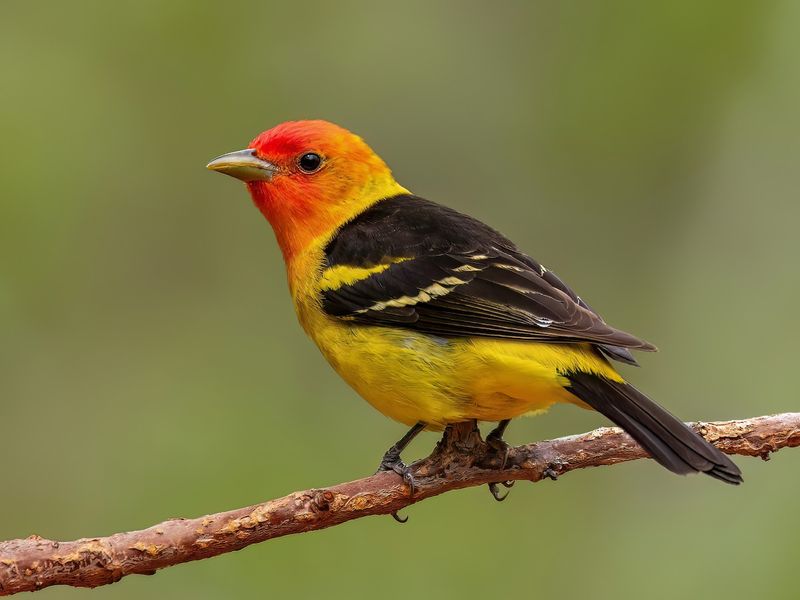
Fiery orange-red heads perched atop canary-yellow bodies make Western Tanagers look like they’re carrying tiny sunsets through Colorado’s pine forests. These striking migrants bring tropical flair to mountain woodlands each summer.
Despite their brilliant colors, many hikers miss these gems as they forage quietly in the forest canopy. Their sweet, robin-like songs often give away their presence before their colors catch your eye.
Mountain Bluebird
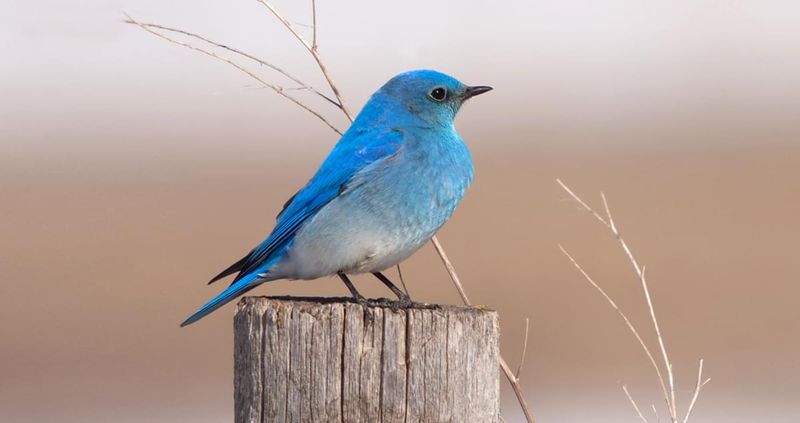
Against Colorado’s rugged landscape, male Mountain Bluebirds appear as pieces of sky come to life. Their unbelievably vibrant turquoise plumage seems almost artificial in its intensity, especially when catching the mountain sunlight.
Watch for them perched on fence posts along mountain meadows, scanning for insects. These hardy birds arrive in high country meadows before the last snow melts, bringing the first splash of spring color to alpine areas.
Lazuli Bunting
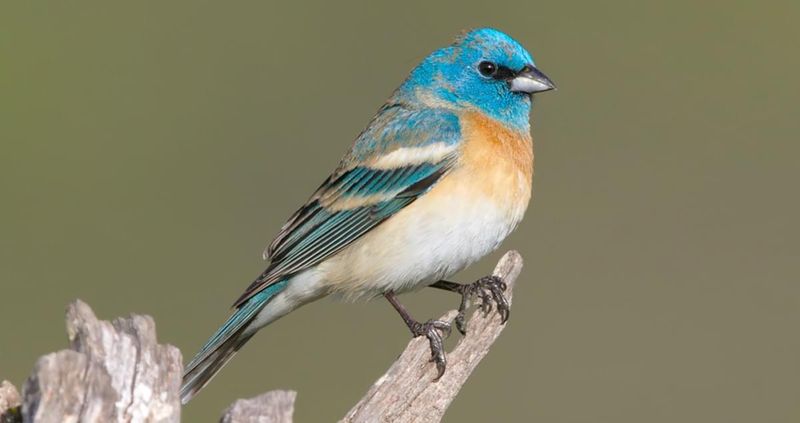
Looking like they’re dressed in faded blue jeans with a rust-colored vest, male Lazuli Buntings bring unexpected color to Colorado’s grasslands and shrubby areas. Their bright azure heads and rusty chest bands create a striking contrast.
Early summer mornings reveal these small songsters perched atop tall weeds, singing complex melodies to defend their territories. The name “lazuli” comes from the same blue gemstone that ancient Egyptians treasured for jewelry.
Lewis’s Woodpecker
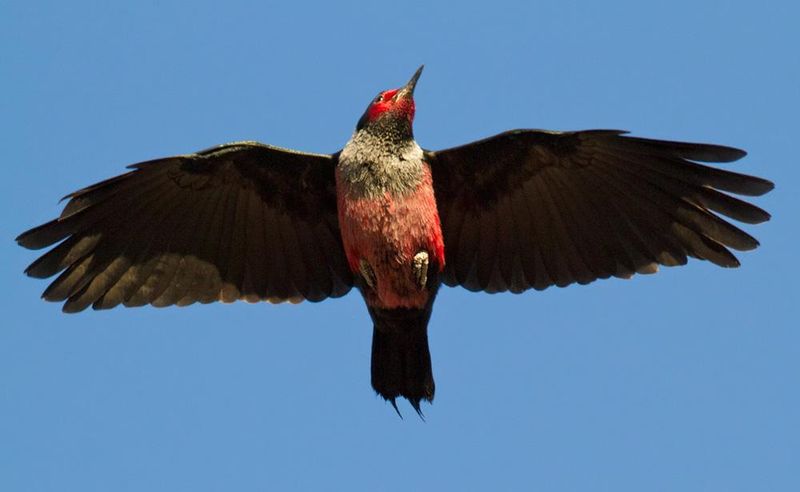
Forget what you think woodpeckers look like! Lewis’s Woodpeckers break all the rules with their pinkish-red bellies, greenish-black backs, and silvery collars that shimmer like metal in sunlight.
Named after explorer Meriwether Lewis, these unusual birds catch insects mid-air like flycatchers instead of drilling into trees. Look for them performing aerial stunts around ponderosa pines, their dark wings flashing pink undersides during acrobatic flights.
Bullock’s Oriole
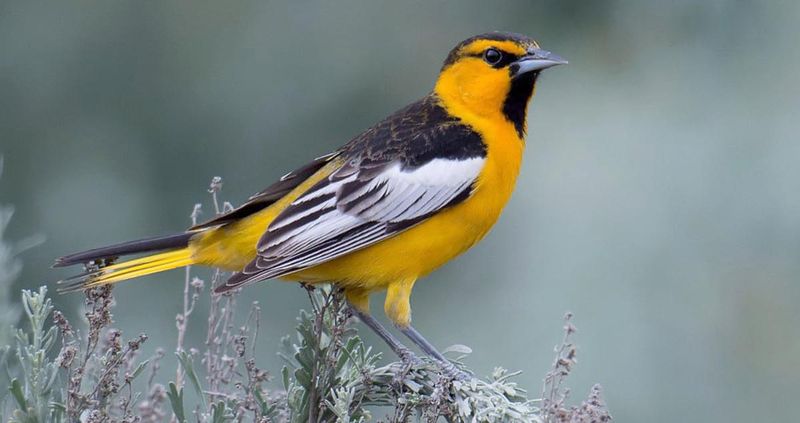
Flashes of brilliant orange and black announce Bullock’s Orioles as they acrobatically navigate Colorado’s riverside cottonwoods. Males sport flame-orange bodies with stark black caps and white wing patches that seem to glow against green foliage.
Master weavers, these birds create remarkable hanging nests that sway from the ends of branches like tiny hammocks. Their flute-like whistles provide the perfect soundtrack for lazy summer afternoons along Colorado’s waterways.
Resplendent Broad-tailed Hummingbird
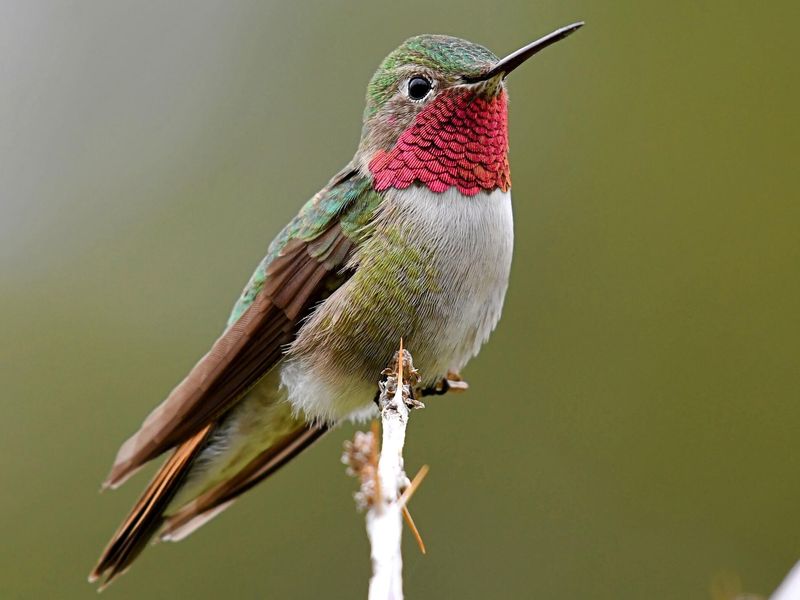
Zipping through mountain meadows at speeds that make them nearly invisible, male Broad-tailed Hummingbirds reveal their presence with distinctive metallic trilling sounds made by their wings. Their ruby-red throats flash like stoplights when they catch the sun.
These tiny fighters brave high elevations that would leave humans gasping for breath. At night, they enter a hibernation-like torpor state, slowing their heart rate from 1,200 beats per minute to just 50 to survive cold mountain nights.
Stellar’s Jay
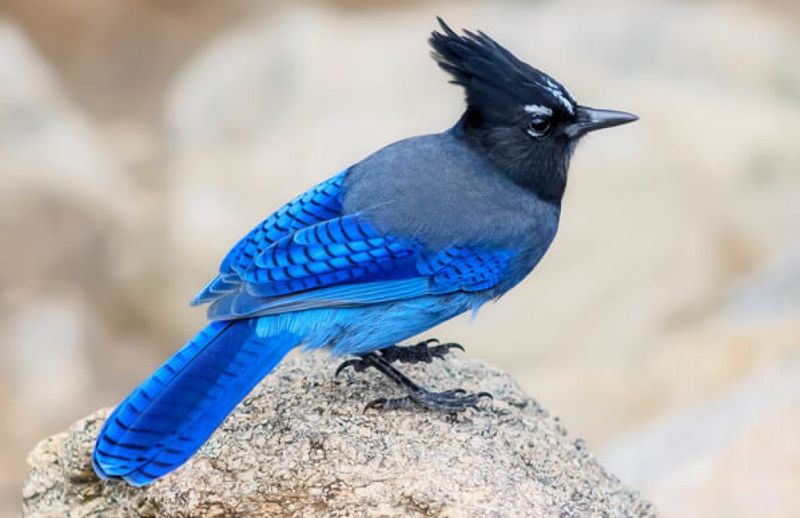
Crested in spiky black and dressed in deep indigo-blue, Steller’s Jays bring tropical color to Colorado’s evergreen forests. These bold, noisy characters aren’t shy about announcing their presence with harsh calls that echo through mountain campgrounds.
Intelligent pranksters, they’ve been known to mimic hawk calls to scare away other birds from feeders. Their remarkable memories allow them to hide thousands of seeds and remember each location—making them accidental forest planters when some caches are forgotten.

